What is On-Page SEO and Why is it Important?
![]()
#On-Page_SEO or #On-Page_SEO is a set of actions and techniques performed within your website to optimize its pages for search engines like Google, Bing, and Yahoo, thereby achieving higher rankings in search results.
This optimization includes various elements such as content, site structure, keywords, and HTML code optimization.
The importance of On-Page SEO lies in its ability to help search engines better understand your page’s content and determine whether your content is relevant and valuable for user searches.
Without a strong on-page optimization strategy, even with high-quality content, your website might not appear in search results.
This is a fundamental step for any website aiming to increase organic traffic and attract targeted audiences.
In fact, On-Page SEO is considered the foundation of success for your entire SEO strategy.
This explanatory and educational approach helps you understand why focusing on the elements within your website’s pages is crucial.
Imagine Google is a vast library; On-Page SEO is like precisely cataloging and correctly categorizing your books so users can easily find them.
This includes the correct use of title tags, meta descriptions, headings, and URL structure.
The better these elements are organized, the easier it is for Google to crawl and index your pages and display them to relevant users.
Ultimately, On-Page SEO not only helps with ranking but also provides a better user experience for visitors.
Is your e-commerce site ready to attract maximum customers and boost sales? Rasaweb transforms your online business with modern and efficient e-commerce website design.
✅ Increased speed and improved SEO
✅ Excellent user experience on mobile and desktop⚡ Get free e-commerce website design consultation from Rasaweb!
Keywords and Their Role in On-Page SEO
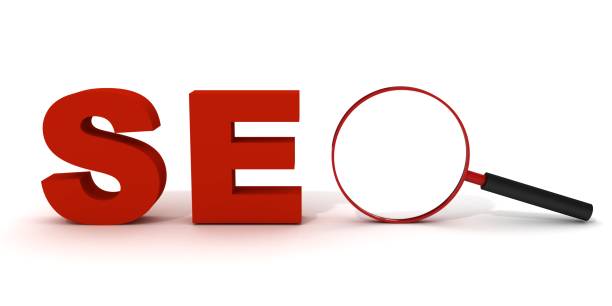
#Keywords are the beating heart of every #Content_SEO strategy and an inseparable part of #On-Page_SEO.
Choosing and correctly using relevant keywords helps search engines understand the main topic of your content and link it to users’ relevant searches.
The first step in this process is comprehensive keyword research.
You should look for words that your target audience uses to find your information, products, or services.
These words can be short-tail, which are more general, or long-tail, which are more specific and targeted.
After identifying keywords, the next step is their intelligent integration into the page’s content.
This includes placing the main keyword in the page title (Title Tag), in meta descriptions (Meta Description), in headings (H1, H2, H3), in the first paragraph of the content, and naturally within the main text.
Natural and not excessive distribution of keywords in the text is crucial; because Google avoids techniques like Keyword Stuffing (excessive keywords) and can even penalize your site for it.
This is an expert and educational approach that shows how to meticulously and subtly leverage the power of keywords to increase site visibility in search results.
Synonymous and related keywords should also be used to enhance search engines’ semantic understanding of the content.
Content Optimization for On-Page SEO and User Experience
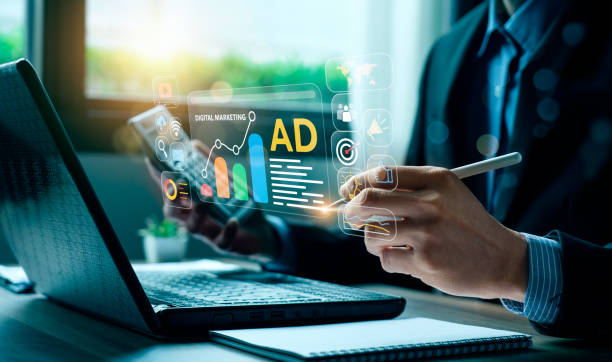
#Content_is_King! This statement holds true more than ever in the world of #SEO.
For success in #On-Page_SEO, your content must not only be optimized for search engines but also be valuable, readable, and engaging for the user.
Content optimization includes several important aspects.
First of all, your content must be original and unique and fully answer user questions or needs.
Longer and more comprehensive content usually performs better, as it can cover a wider range of relevant keywords.
Using headings (H1, H2, H3, etc.) helps to structure the content and makes it easier for the reader.
H1 should include the main keyword, and other headings should logically explain the content of the sub-sections.
Short paragraphs and clear sentences increase readability.
Also, using bulleted or numbered lists presents information in an organized and digestible manner.
In terms of guidance and education, attention to user experience (UX) in content is crucial.
On-Page SEO performs content optimization with the goal of attracting and retaining users.
In the table below, a checklist of key elements for content optimization is provided:
| Element | Description | Optimization Tips |
|---|---|---|
| Keywords | Research and selection of relevant keywords | Natural usage, avoid over-repetition |
| Page Title (Title Tag) | Most important tag for search engines and users | Includes main keyword, engaging and short |
| Meta Description | Summary of page content in search results | Engaging, call to action, includes keywords |
| Headings (H1-H6) | Structuring content and improving readability | Logical, includes sub-keywords |
| Content Readability | Ease of content understanding for the user | Short paragraphs, simple sentences, list formatting |
| Content Length | Comprehensive and complete coverage of the topic | Long enough to cover the topic, without extra material |
URL Structure and Internal Links; Pillars of On-Page SEO
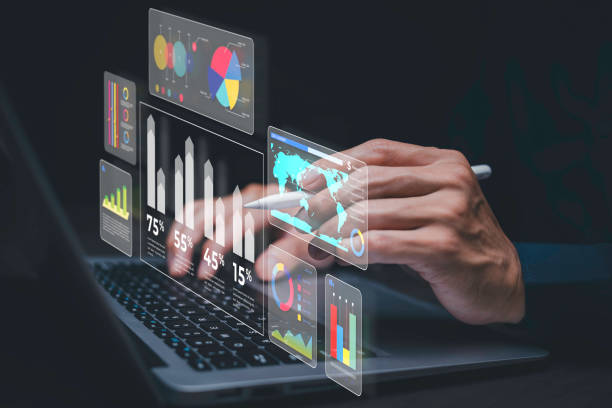
#URL_Structure and #Internal_Links are two main pillars in #On-Page_SEO strategy that are often overlooked, but play a vital role in empowering your pages and improving user experience.
A clear, short, and descriptive URL helps search engines and users understand the page content before clicking.
SEO-friendly URLs should include the main keyword of the page and avoid extra or unclear characters.
Using hyphens (-) to separate words instead of underscores (_) or spaces is a recognized standard.
A suitable URL can significantly affect the CTR (Click-Through Rate) in search results.
Internal linking is also a powerful element in on-page site optimization.
Internal links allow you to show search engines the semantic relationship between different pages of your website.
This not only helps search engines better crawl and index your pages, but also distributes the ranking factor (PageRank) throughout your site.
When a high-authority page links to another page with appropriate Anchor Text, it boosts that page’s credibility.
This is a deep explanation and guide that demonstrates the importance of these two elements in improving On-Page SEO performance.
An internal linking strategy should be purposeful and guide users towards relevant and useful content, not just for SEO purposes.
How much does losing business leads due to an unprofessional website cost you? Solve this problem forever with professional corporate website design by Rasaweb!
✅ Increase credibility and trust of potential customers
✅ Easier attraction of new business leads
⚡ Get free consultation now!
Technical SEO and Its Connection to On-Page SEO
![]()
#Technical_SEO is the strong foundation upon which #On-Page_SEO is built.
While On-Page SEO focuses on content and visible on-page elements, Technical SEO deals with the website’s technical aspects to ensure that search engines can easily crawl, index, and understand your site.
These two areas are closely linked; if technical issues exist on your site, even the best On-Page SEO strategies may become ineffective.
Key elements in Technical SEO include site loading speed, responsiveness (Mobile-friendliness), use of SSL certificates (HTTPS), crawlable site structure, and Robots.txt and Sitemap.xml files.
Site speed is not only an important ranking factor but also directly impacts user experience.
A fast-loading website attracts and retains more users.
Mobile optimization is also crucial in today’s world, where a large portion of searches are conducted via mobile devices.
This is an analytical and expert explanation that shows how improving technical aspects of your site directly affects your On-Page SEO performance.
Correct implementation of structured data (Schema Markup) also helps search engines better understand your content and display it in richer forms in search results (Rich Snippets).
Using Title Tags and Meta Descriptions to Attract Clicks

#Title_Tag and #Meta_Description are the first and most important things users see in search results, even before entering your website.
These two HTML elements not only send important signals to search engines but also play a vital role in attracting clicks from users.
A good title tag should include the main keyword of the page and clearly state the content’s topic.
This tag should be short and engaging to display well within the limited space of search results (usually between 50 to 60 characters).
A meta description is a summary of the page’s content that appears below the title in search results.
Although meta descriptions are not a direct ranking factor, they have a significant impact on click-through rate (CTR).
An engaging meta description, with a call to action and containing keywords, can persuade users to click on your link.
This is an expert guide to optimizing On-Page SEO, showing how to attract more traffic to your site by intelligently using these elements.
Don’t forget that every page on your site should have a unique title tag and meta description.
This helps prevent duplicate content and assists search engines in better understanding your site’s structure.
The Importance of Images and Videos in On-Page SEO
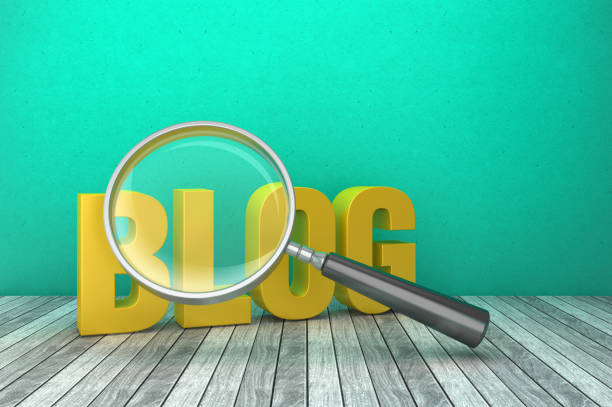
In the current era, where visual content forms a large part of users’ online experience, optimizing #images and #videos for #On-Page_SEO is of utmost importance.
Images and videos not only add visual appeal to your content but can also help with better content comprehension by users and search engines.
For image optimization, the first and most important step is using appropriate Alt Text.
Alt Text is a brief and accurate description of the image content that helps search engines understand the image and makes it accessible to visually impaired users.
This text should include relevant keywords, but keyword stuffing should be avoided.
Optimizing image size and format is also crucial for site loading speed.
Large-sized images can severely reduce your site’s speed and harm your user experience and SEO ranking.
Using modern image formats like WebP and compressing images without significant quality loss is recommended.
For videos, hosting them on platforms like YouTube and embedding them on your site, along with using structured data for video (Video Schema Markup), can help them appear in search results (including video results).
This is a practical tutorial and guide for improving On-Page SEO with visual content.
In the table below, key tips for optimizing images and videos are provided:
| Element | Function | On-Page SEO Tips |
|---|---|---|
| Alt Text | Describes image content for search engines and accessibility | Accurate, descriptive, includes relevant keyword, short |
| Image File Size | Direct impact on page loading speed | Compression, use of modern formats (WebP) |
| Image File Name | Describes image content | Use keywords, with hyphens (-) |
| Video Hosting | Location for storing video files | Use platforms like YouTube or Vimeo |
| Video Structured Data | Helps search engines understand video content | Implement Schema Markup for videos |
Content Update and Maintenance for On-Page SEO Sustainability
![]()
#Content_Update is a very powerful #SEO strategy that is often overlooked.
In the dynamic world of the web, content that is relevant and useful today may become obsolete tomorrow.
Search engines give more weight to fresher and more up-to-date content, as this content likely provides more accurate information to users.
Therefore, to maintain and improve your ranking in #On-Page_SEO, regularly reviewing and updating your old content is a necessity.
This process includes reviewing content statistics, adding new information, removing obsolete information, updating figures and data, adding new keywords that have become popular over time, and improving user experience by adding visual elements or enhancing readability.
Also, internal links can be updated to newer or more relevant pages.
This is a news-oriented and explanatory approach that emphasizes the importance of being dynamic in managing your On-Page SEO.
Updated content can signal to search engines that your page is still active and relevant, which can lead to improved rankings and increased organic traffic.
Content freshness is one of the important factors for Google’s algorithms.
Did you know your company website is the first point of contact for 75% of potential customers?
Your website is the face of your brand. With **Rasaweb**’s corporate website design services, build an online presence that earns customer trust.
✅ Create a professional and lasting image of your brand
✅ Attract target customers and increase online credibility
⚡ Get free consultation from **Rasaweb** experts now!
Performance Review and On-Page SEO Tools

After implementing #On-Page_SEO strategies, the crucial next step is #Performance_Review and #Data_Analysis.
Without measurement, you cannot know what works and what needs improvement.
Various tools are available to help you monitor your On-Page SEO performance and identify strengths and weaknesses.
Two key and free tools every webmaster should use are Google Search Console and Google Analytics.
Google Search Console provides valuable insights into how your site appears in Google Search, the keywords you rank for, crawl issues, indexing errors, and inbound and outbound links.
Google Analytics also provides comprehensive information about site traffic, user behavior (such as bounce rate, time on site, pages visited), and traffic sources.
Together, these tools offer a comprehensive analysis and guide for evaluating the success of your on-page site optimization efforts.
Paid tools like Semrush, Ahrefs, and Moz also offer more advanced capabilities for keyword research, competitor analysis, and rank tracking.
Continuous use of these tools is essential for monitoring and adjusting your On-Page SEO strategy.
Common On-Page SEO Mistakes and How to Avoid Them
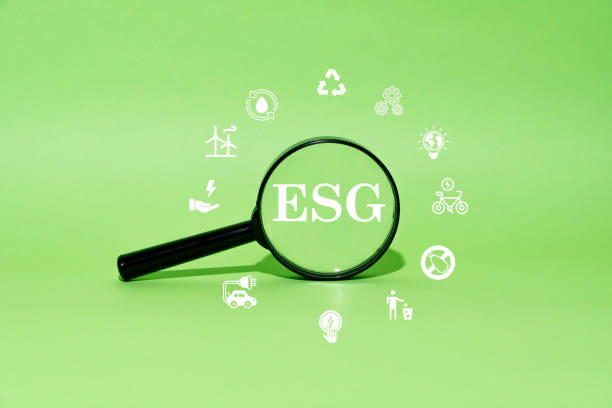
Despite the great importance of #On-Page_SEO, many webmasters and business owners make common mistakes that can render their efforts ineffective.
Recognizing these mistakes and knowing how to avoid them is a crucial step towards achieving high rankings in search engines.
One of the most common mistakes is Keyword Stuffing.
Attempting to overuse a keyword to deceive search engines is not only ineffective but can also lead to your site being penalized.
Keywords should be used naturally and relevantly to the content.
Another mistake is neglecting user experience.
On-Page SEO is not just about search engines; it’s equally about users.
Low-quality content, slow-loading pages, or sites not optimized for mobile can harm your SEO ranking, even if all other factors are met.
Incorrect use of title tags and meta descriptions, weak or absent internal linking, and neglecting image optimization are also common mistakes.
This is a thought-provoking content and guide that helps you strengthen your On-Page SEO strategy by identifying common weaknesses.
Remember that SEO is an ongoing process and requires patience and continuous effort.
Frequently Asked Questions
| Question | Answer |
|---|---|
| What is On-page SEO? | On-page SEO refers to a set of actions performed within your website to improve its ranking in search engine results. This includes optimizing content, site structure, and HTML code. |
| Why is On-page SEO important? | On-page SEO helps search engines understand your page’s content and determine whether your content is relevant to searchers. It is the foundation of any successful SEO strategy. |
| What are the key elements of On-page SEO? | Page title (Title Tag), meta description (Meta Description), keyword usage, image optimization, heading structure (H1, H2, …), internal linking, and content quality are key elements. |
| How to optimize the Page Title (Title Tag)? | The page title should include the main keyword, be engaging and encouraging for clicks, and be between 50 to 60 characters (or appropriate pixels) in length to be fully displayed in search results. |
| What role does Meta Description play in On-page SEO? | The meta description is a summary of the page’s content displayed below the title in search results. Although it does not directly affect ranking, it helps SEO by increasing the click-through rate (CTR). |
| What is the importance of using heading structure (H1, H2, H3) in On-page SEO? | Headings structure the page content and make it easier to read. H1 is typically the main title of the page and should include the keyword. H2 and H3 are used to organize subsections and help search engines understand the content hierarchy. |
| How to effectively use keywords in content? | Keywords should be used naturally and logically throughout the content, including the introduction, body, and conclusion. Avoid keyword stuffing. |
| What steps are involved in optimizing images for On-page SEO? | It includes compressing images to reduce size, using descriptive file names, adding appropriate alt text (Alt Text), and optimizing the image title and description. Alt Text is crucial for accessibility and helping search engines understand image content. |
| What is Internal Linking and what are its benefits? | Internal linking means creating links from one page on your website to another page on the same website. This helps users navigate your site easily, distributes page authority across the site, and helps search engines better understand your site’s structure. |
| What is the importance of content quality in On-page SEO? | High-quality, accurate, comprehensive, and valuable content for users is the cornerstone of On-page SEO. Search engines prefer content that meets user needs. Quality content leads to longer dwell time and lower bounce rate, which are positive SEO signals. |
And other advertising agency services by Rasaweb in the field of advertising
Smart Custom Software: A fast and efficient solution to increase click-through rates by focusing on real data usage.
Smart Ad Campaigns: Revolutionize online growth with Google Ads management.
Smart Social Media: Professional optimization to increase sales using Google Ads management.
Smart Customer Journey Map: A fast and efficient solution to increase website visits by focusing on SEO-driven content strategy.
Smart Website Development: Designed for businesses looking to increase sales through key page optimization.
And hundreds of other services in internet advertising, advertising consultation, and organizational solutions
Internet Advertising | Advertising Strategy | Advertorials
Resources
What is On-Page SEO? Complete Guide to On-Page SEO
What is On-Page SEO and Comprehensive On-Page SEO Tutorial
What is On-Page SEO? (On-Page SEO) + On-Page SEO Tutorial
What is On-Page SEO? (Comprehensive On-Page SEO Tutorial)
? Are you ready to grow your business in the digital world? Rasaweb Afarin Digital Marketing Agency paves your path to success by offering comprehensive and innovative services. From professional website design, which is your business’s storefront, to complex SEO strategies and advertising campaign management, we are with you every step of the way. With us, your brand will be seen at its peak.
📍 Tehran, Mirdamad Street, next to Bank Markazi, Southern Kazeroon Alley, Ramin Alley, No. 6




